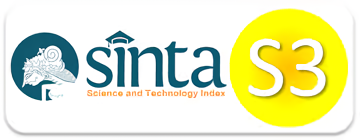A Study of Tourist Attraction Development Policy and Environmental Conservation in the Ijen Crater Natural Park
Downloads
Tourism development in Indonesia is increasing, as it is beneficial to the the social, cultural, educational, environmental and economic sectors of the country. In maintaining the sustainability of tourism, the government optimizes business in the field of ecotourism. Ecotourism as an environmentally friendly tourism can have a positive impact in the form of economic improvement, conservation, education, environmental preservation and empowerment of local communities. One ecotourism that has always been a magnet for tourists today is the Nature Tourism Park (TWA) Ijen Crater. Ijen Crater is a nature conservation area with diverse natural potential and is used as a nature conservation park. This study discusses the analysis of environmental damage prevention in the Ijen Crater Nature Park. A qualitative descriptive research approach with data collection techniques through primary data and secondary data was applied. The data were analyzed with data collection analysis, reduction, presentation and data verification. The results of this study are the natural potential of Ijen Crater TWA including the Ijen crater lake, blue fire, sulfur mining, vegetation and animals, Paltuding fun trekking, and Bunder cottage. The environmental conditions of tourist objects and attractions in Ijen Crater TWA are still in a good stage because the manager continues to strive to supervise and protect the tourist objects and attractions. The results of the analysis were interpreted by applying literary research of two regulations, namely UU No.32 of 2009 and UU No.10 of 2009. The result showed that there were three indicators that were not in accordance with UU No.10 of 2009 on Tourism, including the implementation of principles; coordination; and rights, obligations and prohibitions. The efforts to prevent enviromental damage can be done by dividing the area blocks, designing the site and disseminating information to tourists.
BBKSDA. 2012. Profil Kawasan TWA Kawah Ijen. [Diakses 2019 Maret 4]. Tersedia pada: http://bbksdajatim.org/taman-wisata-alamkawah-ijen-1521.
Butler, R.W. 1993. The Concept Of A Tourist Area Cycle Of Evoluation Implications For Management Of Resources. Canadian Geographer.
Eston, A., Hananto, U. D., and Soemarmi, A. 2016. Pengelolaan potensi Pariwisata Dalam Membangun Kepariwisataan Di Kabupaten Banyuwangi Menurut Undang – Undang Nomor 23 Tahun 2014 Tentang Pemerintah Daerah. Jurnal Ilmu Hukum.5(2).
Fanani, A. 2017. Puncak Ijen Dibangun. [Diakses 2019 Maret 4]. Tersedia pada: http://m.detik.com/puncak ijen tetap dibangun ini yang dilakukan aktivis lingkungan.
Febrian, A.W. 2014. Evaluasi Kinerja Pengelolaan Alun-Alun Kabupaten Ponorogo Provinsi Jawa Timur [skripsi]. Bali: Universitas Udayana.
Goodland, R. 1995. The Concept of Environmental Sustainability Washington DC. Annual Reviews Inc. 26: (1-24)
Irawan, E. 2015. Implementasi Kebijakan Pembangunan Pariwisata Di Kabupaten Banyuwangi. Jurnal Jejaring Administrasi Publik. 7(2).
Junianti, R.A., Soekmadi, R., and Santoso, N. 2016. Perencanaan Program Interpretasi Lingkungan Sebagai Strategi Pengembangan Ekowisata Di TWA Kawah Ijen. Jurnal Kebijakan Pertanian dan Lingkungan.3(2) : 153-161.
Kadir, A., Purwanti, R., and Nurhaedah. 2013. Konflik Pada Kawasan Taman Nasional Batimurung Bulusaraung Provinsi Sulawesi Selatan Dan Upaya Penyelesaiannya. Jurnal Sosial dan Ekonomi Kehutanan. 10(3) : 186-198
Negara, P.D. 2011. Rekontruksi Kebijakan Pengelolaan Kawasan Konservasi Berbasis Kearifan Lokal Sebagai Kontribusi Menuju Pengelolaan Sumber Daya AlamYang Indonesia. Jurnal Konstitusi. 5(2).
Pitana, I.G., dan Putu, G.G. 2005. Sosiologi Pariwisata. Yogyakarta: Andi Offset.
Pratami, R.H.Y. 2017. Pengembangan Wisata Alam Di Taman Wisata Alam Kawah Ijen [skripsi]. Bogor: Institut Pertanian Bogor.
Prasita, V. D., Widigdo, B., Hardjowigio, S., dan Budiharsono, S. 2008. Kajian Daya Dukung Lingkungan Kawasan Pertambakan Di Pantura Kabupaten Gresik Jawa Timur. Jurnal Ilmu-Ilmu Perairan dan Perikanan Indonesia. 15(2): 95-102.
Purnaweni, H. 2014. Kebijakan Pengelolaan Lingkungan Di Kawasan Kendeng Utara Provinsi Jawa Tengah. Jurnal Ilmu Lingkungan. 12(1): 53-65.
Riyadi, S., Djumahir, D.H., and Hakim, L. 2012. Daya Saing Daerah Tujuan Wisata (Studi Kasus Rendahnya Daya Saing Taman Wisata Alam Kawah Ijen Banyuwangi). Jurnal Aplikasi Manajemen. 10(3).
Setyaningsih, W., Iswati, T.Y., Yuliani, S., Nuryanti, W., Prayitno, B., and Sarwadi, A. 2015. Low Impact Development as an Implementation of the Eco Green Tourism Concept to Develop Kampung towards Sustainable City. Procedia Social and Behavioral Sciences. 179 : 109 – 117.
Setyabudi, B. 2008. Kajian Lingkungan Hidup Strategis. Jakarta : Kompas.
Singgalen, Y.A., Wiloso, P.G., and Sasongko, G. 2017. Evaluation of the Implementation of Tourism Policy. Jurnal Kebijakan dan Administrasi Publik. 21(1) : 76-98.
Suardana, I.W. 2016. Analisis Kebijakan Pengembangan Pariwisata (Intervensi Melalui Kebijakan Pariwisata Berkelanjutan di Bali). Research Gate.
Suhartadi, A. 2009. Evaluasi Pengelolaan Lingkungan Kegiatan Penambangan Batu Kapur PT. Sinar Asia Fortuna (SAF) Di Rembang [tesis]. Semarang: Universitas Diponegoro.
Sugiyono. 2016. Metode Penelitian Bisnis. Bandung : Alfabeta.
Theobald, W. 2005.Global Tourism Third Edition. Elsevier : United State Of America.
Undang-Undang Nomor 10 Tahun 2009 tentang Kepariwisataan
Undang-Undang Nomor 32 Tahun 2009 Tentang Perlindungan Dan Pengelolaan Lingkungan Hidup
Widowati, S., and Nadra, N.M. 2013. Evaluasi Penerapan Prinsip – Prinsip Dan Kriteria Ekowisata Di Kawasan Taman Wisata Alam Kawah Ijen Banyuwangi. Jurnal Sosial Dan Humaniora. 3(3).
Wardoyo, M.W., and Bahtarudin. 2003. Kebijakan Pengembangan Kepariwisataan (Studi Kasus Perumusan Kebijakan Desa Wisata di Desa Ketenger, Kecamatan Baturraden, Kabupaten Banyuwas). Jurnal Pembangunan Pedesaan. 3(1).
Copyright notice:
- Authors retain copyright and grant the journal right of first publication with the work simultaneously licensed under a Creative Commons Attribution-NonCommercial-ShareAlike 4.0 International License that allows others to share the work with an acknowledgement of the work's authorship and initial publication in this journal.
- Authors are able to enter into separate, additional contractual arrangements for the non-exclusive distribution of the journal's published version of the work with an acknowledgement of its initial publication in this journal.
- Authors are permitted and encouraged to post their work online (e.g., in institutional repositories or on their website) prior to and during the submission process, as it can lead to productive exchanges, as well as earlier and greater citation of published work (See The Effect of Open Access)
















